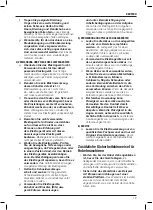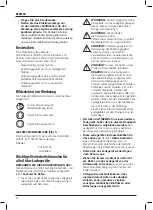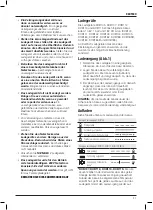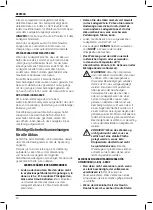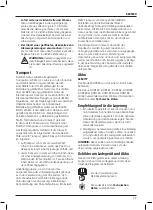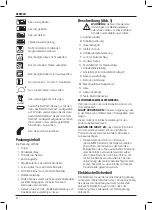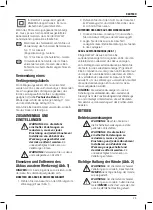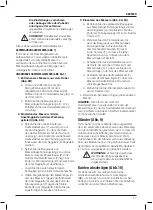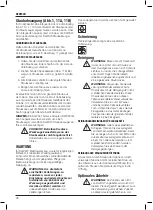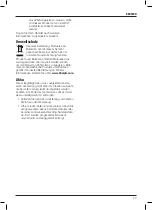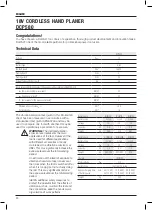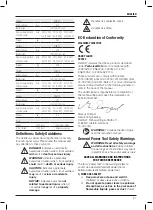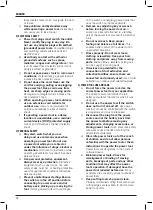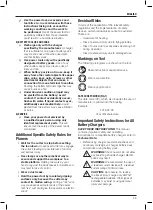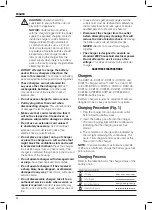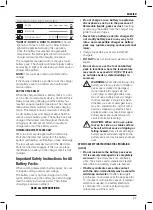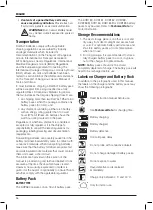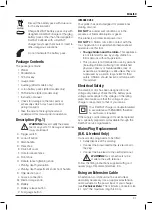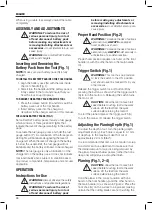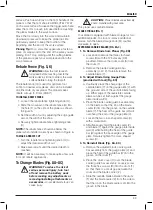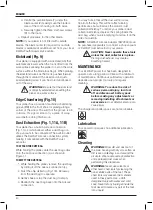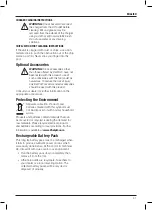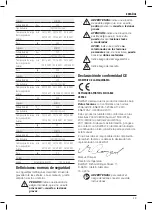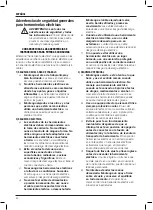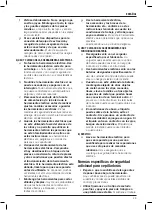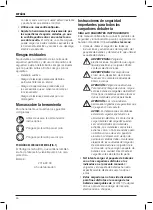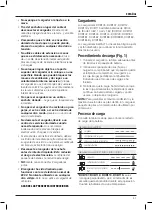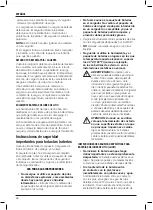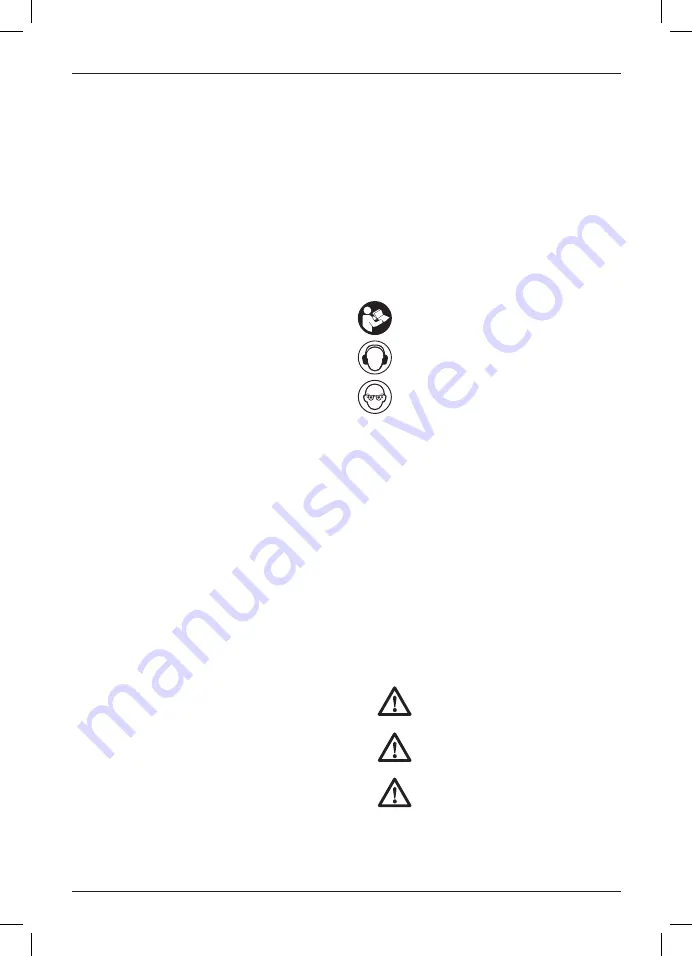
33
english
Residual Risks
In spite of the application of the relevant safety
regulations and the implementation of safety
devices, certain residual risks cannot be avoided.
These are:
– Impairment of hearing.
– Risk of personal injury due to flying particles.
– Risk of burns due to accessories becoming hot
during operation.
– Risk of personal injury due to prolonged use.
Markings on Tool
The following pictograms are shown on the tool:
Read instruction manual before use.
Wear ear protection.
Wear eye protection.
DATE CODE POSITION (FIG. 1)
The date code (CC), which also includes
the year of
manufacture, is printed into the housing.
Example:
2016 XX XX
Year of Manufacture
Important Safety Instructions for All
Battery Chargers
SAVE THESE INSTRUCTIONS:
This manual
contains important safety and operating
instructions for compatible battery chargers (refer to
Technical Data
).
• Before using charger, read all instructions and
cautionary markings on charger, battery pack,
and product using battery pack.
WARNING:
Shock hazard. Do not allow
any liquid to get inside charger. Electric
shock may result.
WARNING:
We recommend the use of
a residual current device with a residual
current rating of 30mA or less.
CAUTION:
Burn hazard. To reduce
the risk of injury, charge only
D
e
WALT
rechargeable batteries. Other types of
batteries may burst causing personal
injury and damage.
g)
Use the power tool, accessories and
tool bits etc., in accordance with these
instructions taking into account the
working conditions and the work to
be performed.
Use of the power tool for
operations different from those intended
could result in a hazardous situation.
5) BATTERY TOOL USE AND CARE
a)
Recharge only with the charger
specified by the manufacturer.
A charger
that is suitable for one type of battery pack
may create a risk of fire when used with
another battery pack.
b)
Use power tools only with specifically
designated battery packs.
Use of any
other battery packs may create a risk of
injury and fire.
c)
When battery pack is not in use, keep it
away from other metal objects like paper
clips, coins, keys, nails, screws or other
small metal objects that can make a
connection from one terminal to another.
Shorting the battery terminals together may
cause burns or a fire.
d)
Under abusive conditions, liquid may
be ejected from the battery; avoid
contact. If contact accidentally occurs,
flush with water. If liquid contacts eyes,
additionally seek medical help.
Liquid
ejected from the battery may cause irritation
or burns.
6) SERVICE
a)
Have your power tool serviced by
a qualified repair person using only
identical replacement parts.
This will
ensure that the safety of the power tool is
maintained.
Additional Specific Safety Rules for
Planers
• Wait for the cutter to stop before setting
the tool down.
An exposed cutter may engage
the surface leading to possible loss of control
and serious injury.
•
Use clamps or another practical way to
secure and support the workpiece to a
stable platform.
Holding the work by your
hand or against the body leaves it unstable and
may lead to loss of control.
•
Wear a dust mask.
•
Hold the power tool by insulated gripping
surfaces only, because the cutter may
contact its hidden wiring.
Cutting a "live" wire
may make exposed metal parts of the power
tool "live" and could give the operator an electric
shock.

